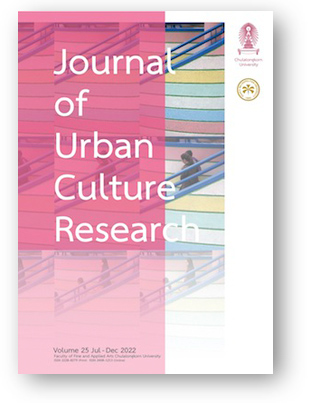Chiang Mai’s Intangible Cultural Heritage: Urban Revitalization and Cultural Identity in a Northern Thai City
DOI:
https://doi.org/10.14456/jucr.2022.17Keywords:
Chiang Mai; Intangible Cultural Heritage Revitalization; Urban Identity; Urban Resilience; Urban Sustainability; Ritual; ThailandAbstract
Founded in 1296 CE, the walled city of Chiang Mai, Thailand was once the capital of the Lanna kingdom. In the sixteenth century, Chiang Mai’s fortunes waned, and it became a tributary state under the Burmese. This was followed by its incorporation into the Thai nation-state in the twentieth century. One outcome of Chiang Mai’s administrative integration into the Thai nation was the erosion of its distinctive cultural identity. Beginning in the 1980s, key local figures began to collaborate with communities and academic institutions to revitalize Chiang Mai’s intangible cultural heritage, including its craft traditions, rituals, textiles, and dance performances. After tracing a brief history of Chiang Mai and the Lanna revitalization movement, this article analyzes two rituals – the Candle Lighting ritual and the Yor Suai Wai Sa Phraya Mangrai ritual – to illustrate how community-based organizations in Chiang Mai have worked together to restore the city’s spirit of place, contributing to its resilience and sustainability.
Downloads
Published
Versions
- 2023-01-13 (2)
- 2022-12-20 (1)
How to Cite
Issue
Section
License

This work is licensed under a Creative Commons Attribution-NonCommercial-NoDerivatives 4.0 International License.
Authors authorize the JUCR to publish their materials both in print and online while retaining their full individual copyright. The copyright of JUCR volumes is retained by Chulalongkorn University.
The views and opinions expressed herein are those of the individual author(s) and do not necessarily reflect the policies or opinions of the Journal (JUCR), it editors and staff, Chulalongkorn University, or Osaka Metropolitan University.








